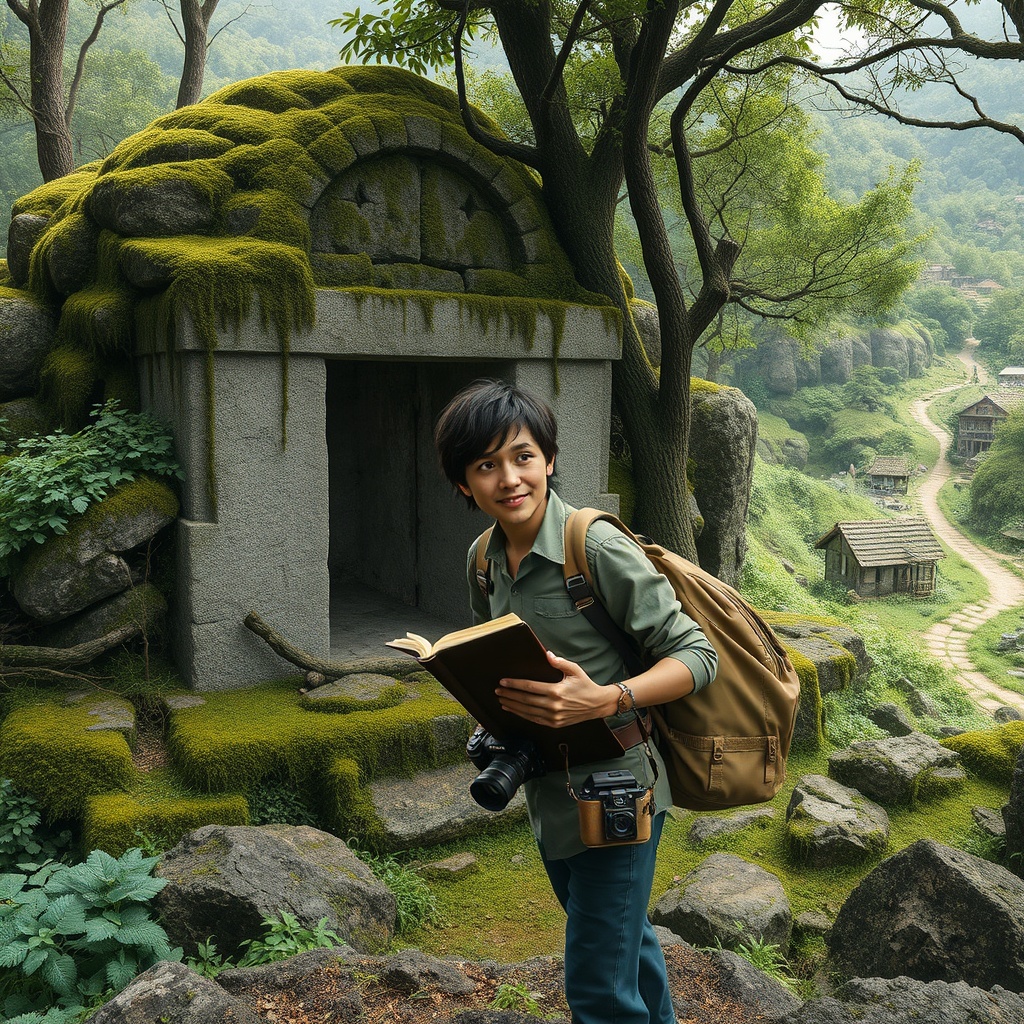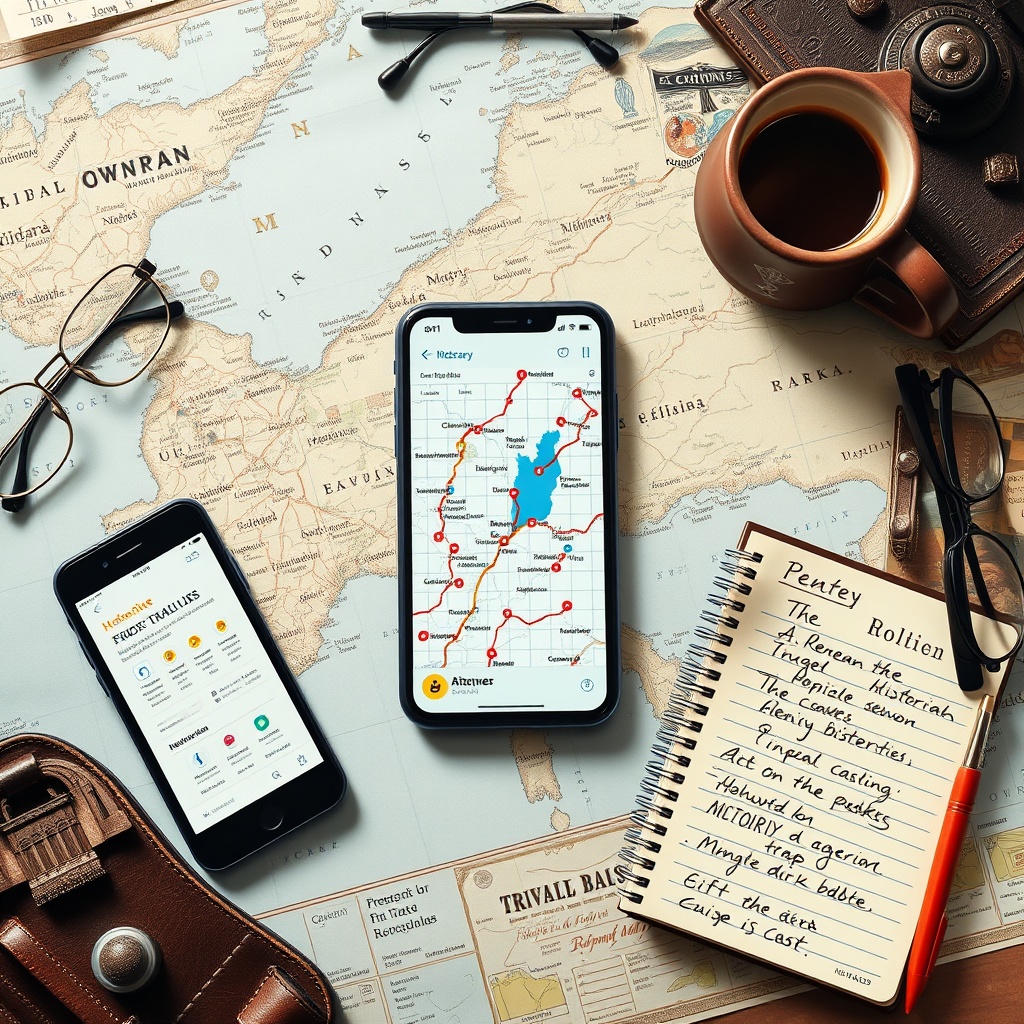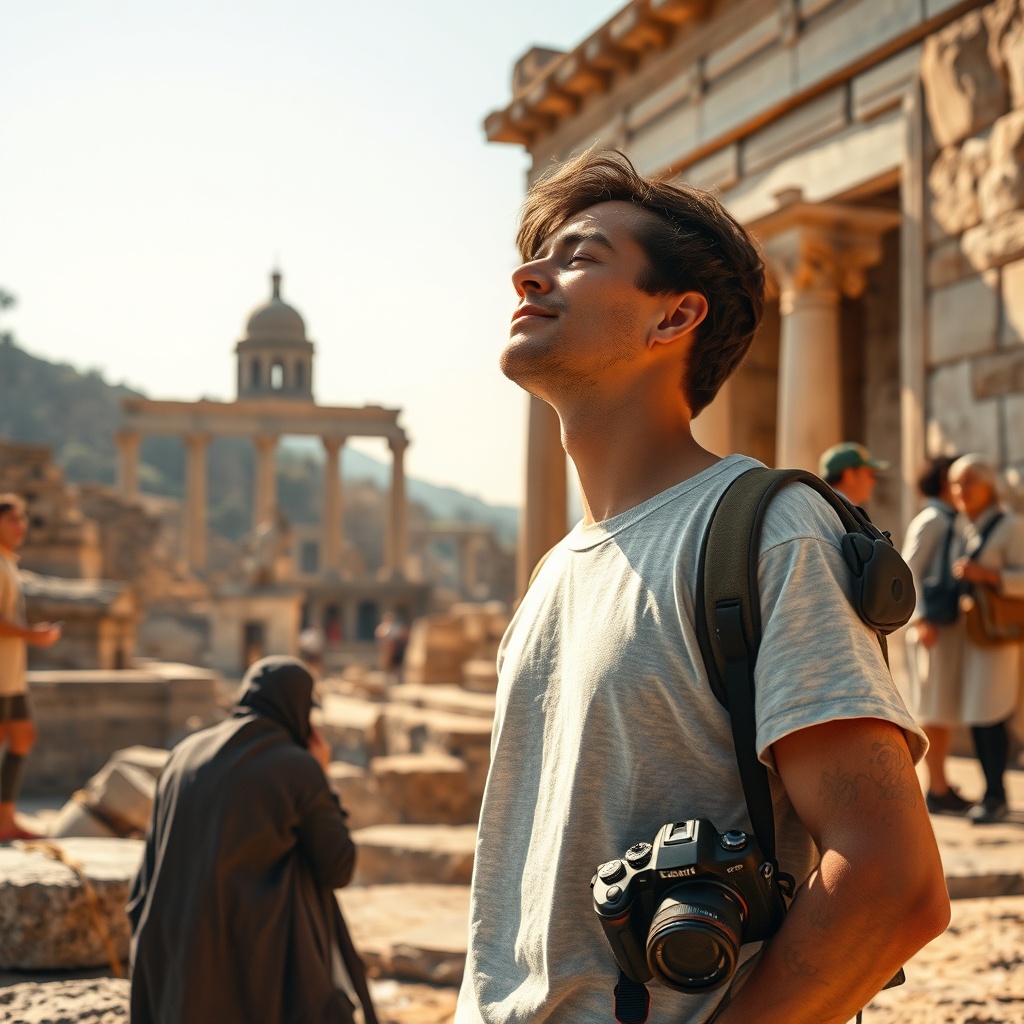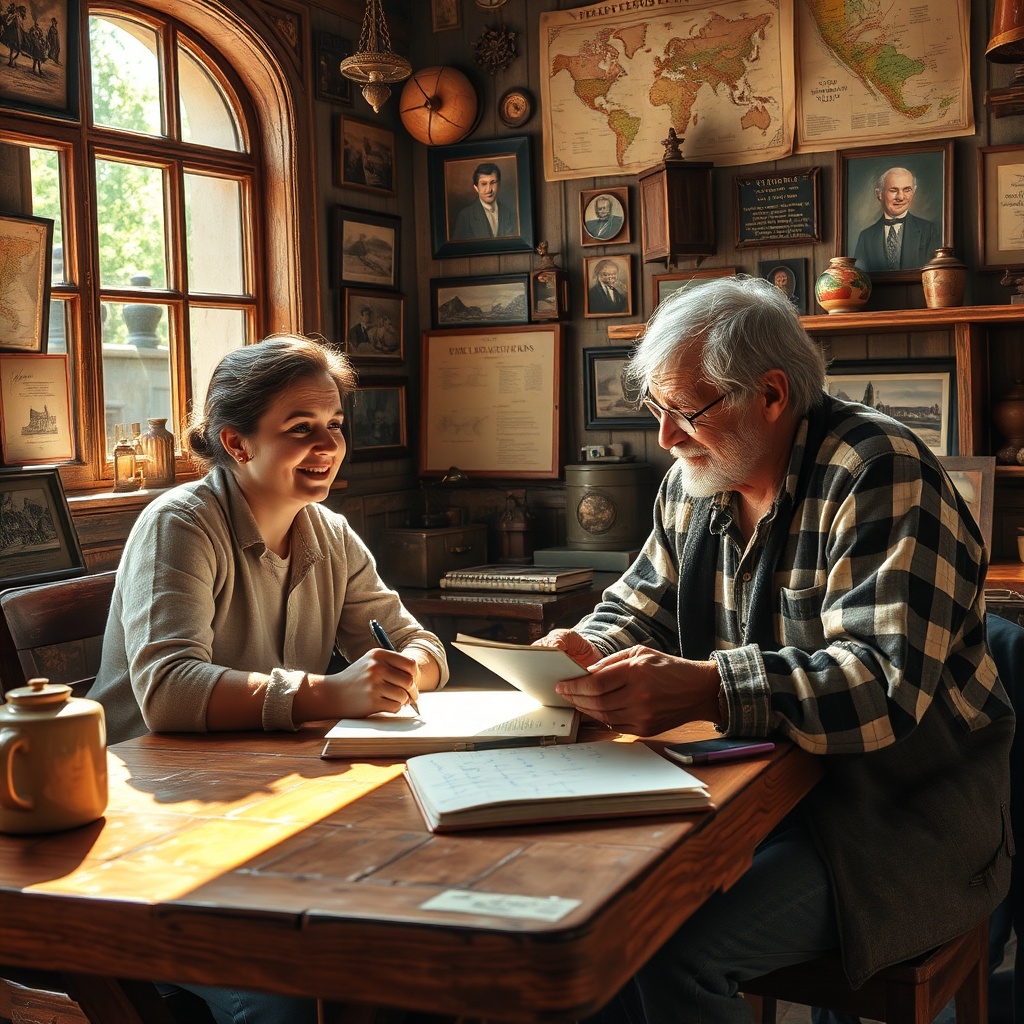8 tips for making a trip course to historical sites
Are you dreaming of walking through ancient ruins, unraveling the mysteries of bygone eras, or simply experiencing history come to life? Planning a journey through historical sites isn’t just about ticking landmarks off your list—it’s about crafting a story that moves you. Whether you’re a seasoned heritage explorer or a first-time traveler eager to step back in time, organizing the perfect route can be intimidating. Are you unsure how to fit all the best stops into the time you have? Do you want to feel the spirit of the places you visit, rather than just pass by? In this guide, you'll discover eight must-know tips—fresh from my field notes this week—that turn your travel blueprint into an unforgettable story filled with wonder, learning, and lasting memories. Join me as we explore how to transform your historical site hunt into a meaningful journey you’ll remember for a lifetime!

When planning the perfect historical sites trip, one of the most rewarding strategies is to research hidden historical gems that are often overlooked by mainstream tourists.
While iconic landmarks like the Colosseum or the Great Wall of China are must-sees, true history lovers know that the soul of a place often lies in its lesser-known corners. These hidden gems offer unique stories, untouched beauty, and a sense of discovery that can make your journey unforgettable.
Why Seek Out Hidden Historical Gems?
- Authentic Experiences: Smaller, less-visited sites often provide a more intimate connection with local history and culture.
- Escape the Crowds: Enjoy peaceful exploration without the rush and noise of tourist hotspots.
- Support Local Communities: Visiting off-the-beaten-path sites helps sustain local economies and preserves heritage.
- Personal Growth: Discovering unknown stories and places can broaden your perspective and inspire curiosity.
How to Find Hidden Historical Gems
- Consult Local Experts: Reach out to local historians, guides, or even residents. Their insights are invaluable and often not found in guidebooks.
- Explore Academic Resources: University archives, historical journals, and local museums can reveal sites of significance that are not widely publicized.
- Leverage Online Communities: Platforms like Reddit, travel forums, and history blogs are treasure troves of personal recommendations and stories.
- Use Specialized Apps: Apps focused on cultural heritage or niche travel can highlight sites that standard travel apps might miss.
| Resource | What You'll Find | Example |
|---|---|---|
| Local Historical Societies | Personal stories, rare archives | Unmarked battlegrounds, ancient ruins |
| Specialized Travel Blogs | First-hand accounts, hidden spots | Secret monasteries, forgotten castles |
| Academic Papers | Research-based site lists | Archaeological dig sites, ancient settlements |
Tips for Responsible Exploration ▼
- Always respect local customs and regulations when visiting lesser-known sites.
- Leave no trace: help preserve these treasures for future generations.
- Consider guided tours to gain deeper insight and ensure respectful access.
Incorporating hidden historical gems into your travel course not only enriches your trip but also supports the preservation of cultural heritage. You’ll return home with unique stories, new perspectives, and a deeper appreciation for the world’s diverse history.
Key Takeaway:
With a little extra research and curiosity, you can transform your historical sites trip from ordinary to extraordinary. Don’t just follow the crowds—let the road less traveled reveal its secrets to you.

Planning a historical sites trip is like crafting your own epic adventure—one where every stop tells a story and every detour is a chance to make memories. But to truly enjoy your journey, mapping out an efficient adventure is essential. This is where the magic of trip planning, route optimization, and a little bit of historical curiosity come together.
Let’s break down the process using the classic storytelling structure, inspired by Harmon's law. Your journey begins with a desire to explore the past, but soon you’ll realize that without a plan, time and energy can be wasted. Here’s how to turn your trip into a seamless, insightful, and rewarding experience:
- Define Your "Hero's Goal": Start by listing the historical sites you absolutely don’t want to miss. Prioritize them based on your interests—be it ancient ruins, museums, or UNESCO heritage sites. This sets your adventure’s main quest.
- Research the Geography: Plot each site on a digital map. Notice clusters and outliers. Grouping nearby sites saves time and reduces travel fatigue. Use keywords like historical sites map and travel efficiency to find helpful resources.
- Estimate Distances and Times: Calculate travel times between each site. Don’t just rely on distance—consider traffic, opening hours, and public transport options. Apps like Google Maps or Rome2Rio can be invaluable here.
- Balance Depth and Breadth: It’s tempting to pack your itinerary, but less is often more. Allow enough time at each location to absorb its story. This prevents your adventure from becoming a rushed checklist.
- Identify "Rest and Recharge" Points: Schedule breaks in scenic parks, local cafes, or even at your accommodation. These moments help you reflect and avoid burnout, keeping your journey enjoyable.
- Prepare for the Unexpected: Every good story has twists. Build in buffer time for spontaneous discoveries or unforeseen delays. Flexibility is a secret ingredient to a memorable trip.
- Leverage Technology: Use itinerary apps or spreadsheets to visualize your route. Share your plan with travel companions so everyone’s on the same page. This enhances both safety and fun.
- Reflect and Adjust: After each day, review what worked and what didn’t. Adjust your next day’s plan if needed. This iterative approach ensures you get the most out of your historical adventure.
By mapping out your adventure with intention, you transform a simple trip into a meaningful journey through time. Efficient planning means more energy for exploration, deeper learning, and richer memories. So, before you set out, invest a little time in crafting your route—your future self will thank you!
| Step | Benefit | Tools |
|---|---|---|
| Grouping Sites | Less travel, more sightseeing | Google Maps, TripIt |
| Time Estimation | Reduces stress and delays | Rome2Rio, local transit apps |
| Buffer Time | Flexibility for surprises | Custom itinerary spreadsheets |
Remember, the most rewarding historical journeys are those where you have the freedom to wander, the structure to stay on track, and the insight to savor every moment. Happy exploring!

When planning the perfect historical sites trip, it's easy to fall into the trap of seeing your journey through the lens of a camera. While photography is a wonderful way to preserve memories, truly capturing the experience means engaging all your senses and creating lasting impressions that go far beyond digital images.
Let’s explore how you can enrich your historical travel experience and return home with more than just a gallery of photos.
Take a moment to stand still and soak in the ambiance. Listen to the echoes of the past in ancient ruins, feel the texture of centuries-old stone, and notice the scent of the air. These sensory details create vivid memories that no camera can capture.
Historical sites are brought to life by the stories of the people who lived there. Talk to local guides, read plaques, or join a walking tour. Ask questions and listen to anecdotes. This will deepen your understanding and give you personal connections to the places you visit.
After visiting a site, jot down your thoughts and feelings. What surprised you? What moved you? Even a few sentences can help you remember the emotional impact of your visit. Journaling can also help you process and appreciate the significance of what you’ve seen.
If you enjoy drawing, try sketching a scene or detail that catches your eye. Alternatively, record the sounds around you or your spoken reflections. These creative acts can help you remember the atmosphere and emotions of the moment.
Many historical sites offer workshops, reenactments, or traditional crafts. Participating in these activities lets you experience history firsthand and creates unique memories that photos alone can’t provide.
| Method | Benefit |
|---|---|
| Listening to stories | Deeper cultural understanding |
| Journaling | Emotional connection & reflection |
| Hands-on activities | Active learning & engagement |
| Sketching or audio recording | Creative memory retention |
- Challenge: It’s tempting to focus on taking the perfect shot, but this can distract you from being present.
- Solution: Set aside your camera for a while. Try to observe, listen, and interact without the filter of a lens.
- Reward: You’ll return home with stories, insights, and feelings that are uniquely yours—and these are the souvenirs that truly enrich your life.
So, next time you visit a historical site, remember: capture the experience, not just the image. Your journey will be richer, and your memories will be deeper and more meaningful.

When planning the perfect historical sites trip course, one of the most rewarding approaches is to seek local stories and surprises. Instead of just following guidebooks or popular itineraries, open yourself to the unique narratives that only locals can share. This approach transforms your journey from a checklist of landmarks into a living, breathing adventure.
Every historical site has its well-known facts, but the true magic often lies in the lesser-known tales whispered by residents. These stories can reveal hidden meanings, forgotten heroes, or unexpected twists in history. For example, a local shopkeeper might tell you about a secret tunnel beneath an ancient castle, or a retired teacher could share childhood memories of a festival that once brought the whole town together.
Why Seek Local Stories?
- Deeper Connection: Engaging with locals fosters a genuine connection to the place, making your experience more memorable and meaningful.
- Unique Insights: Locals often know details and anecdotes that are not documented in official histories or travel guides.
- Personal Growth: Listening to different perspectives broadens your understanding of culture, resilience, and community.
- Unexpected Adventures: Sometimes, a casual conversation leads to a spontaneous invitation—perhaps to a family dinner, a hidden garden, or a local celebration.
How to Discover Local Stories
- Talk to Residents: Strike up conversations at cafes, markets, or parks. Ask open-ended questions about their favorite local legends or childhood memories.
- Join Community Events: Attend local festivals, workshops, or walking tours led by residents. These events are rich sources of tradition and storytelling.
- Visit Small Museums: Local museums often highlight personal stories and artifacts that larger institutions overlook.
- Support Local Businesses: Small shops and family-run restaurants are not just places to eat or shop—they are hubs of community history and pride.
| Strategy | Benefit | Example |
|---|---|---|
| Engage with Locals | Authentic insights, personal stories | Chatting with a local baker about ancient recipes |
| Attend Local Events | Experience living traditions | Joining a town's annual harvest festival |
| Explore Off-the-Path Sites | Discover hidden gems | Finding a centuries-old chapel in a quiet village |
Real Traveler's Story ▼
During a trip to a medieval town, I skipped the main tour and instead spent an afternoon in a tiny bookshop. The owner, an elderly woman, shared tales of her grandfather's role in the town's resistance during World War II. She even showed me a secret room behind a bookshelf, filled with old letters and photographs. This experience, unlisted in any guide, became the highlight of my journey.
By seeking local stories and surprises, you enrich your travel with authenticity, serendipity, and human connection. The memories you create will not only be unique but also deeply rooted in the living spirit of the places you visit.
Remember:History is not just in monuments—it's alive in the hearts and voices of the people who call these places home. Make space for their stories, and your trip will become truly unforgettable.